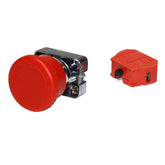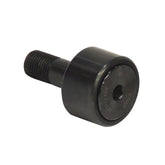Maintenance for Hydraulic Hangar Doors: Ensuring Safety and Longevity
When it comes to aviation facilities or even large storage areas, hydraulic hangar doors have become an industry favorite, thanks to their efficient use of space and robust performance. These doors, often large and imposing, provide a safe and secure closure while allowing easy access when required. However, like all mechanical structures, they require regular maintenance to ensure they operate efficiently and safely over their lifetime.
1. Safety First
Before commencing any maintenance task, always ensure that the power to the hydraulic system is switched off. This will prevent any accidental movement of the door, potentially causing injury. It’s also a good practice to inform any personnel in the area about the maintenance work, so they can stay clear of the working space.
2. Visual Inspections
The first step in maintenance is always a thorough visual inspection. Look for:
- Any signs of wear or damage to the hydraulic cylinders, lines, and fittings.
- Leaks or signs of hydraulic fluid on the floor or around the fittings.
- Rust or corrosion on the door panels or the hydraulic components.
3. Hydraulic Fluid Check
The hydraulic system relies heavily on its fluid to operate:
- Fluid Levels: Regularly check the reservoir to ensure it has the right level of hydraulic fluid. Low levels can cause the system to malfunction or operate at reduced efficiency.
- Fluid Quality: Hydraulic fluid can degrade over time. Look for any signs of cloudiness or presence of debris which might indicate contamination. It's advisable to change the hydraulic fluid at intervals recommended by the door manufacturer.
4. Seal & Fitting Inspection

Hydraulic systems operate under high pressure. The seals and fittings are crucial to maintaining this pressure:
- Check for any signs of wear or damage on the seals. Damaged seals can cause leaks and reduce system efficiency.
- Ensure all fittings are tight and in good condition. Loose fittings can be a source of leaks.
5. Regular Cleaning
- Clean any dirt, grime, or debris from the door panels and the hydraulic components. This not only ensures smooth operation but also prevents corrosive damage.
- Use approved cleaning agents and ensure no residue is left behind, as this can attract more dirt.
6. Lubrication
Moving parts require regular lubrication to prevent wear:
- Ensure hinges, if present, are lubricated with a suitable grease.
- Check the manufacturer's recommendations for any specific lubrication points or intervals.
7. Electrical Systems

Many hydraulic hangar doors also incorporate electrical components:
- Regularly inspect any electrical connections, switches, or sensors.
- Ensure that there is no moisture intrusion, which can lead to short circuits or malfunctioning.
8. Test Operations
After any maintenance or inspection:
- Operate the door a few times to ensure it is functioning correctly.
- Listen for any unusual noises, which might indicate a problem.
9. Professional Inspection

While regular in-house checks and maintenance are crucial, it's also advisable to have a professional inspection periodically. An expert might identify potential issues that might not be evident to untrained eyes.
Hydraulic hangar doors are an essential part of many aviation facilities, providing safety and accessibility. Regular maintenance ensures these doors remain reliable, safe, and have a long operational life. When it comes to sourcing replacement parts for your hydraulic hangar door, look no further than Hangar Door Parts. Dedicated to quality and reliability, they are the trusted destination for all your hangar door component needs, ensuring your system runs seamlessly and safely.





